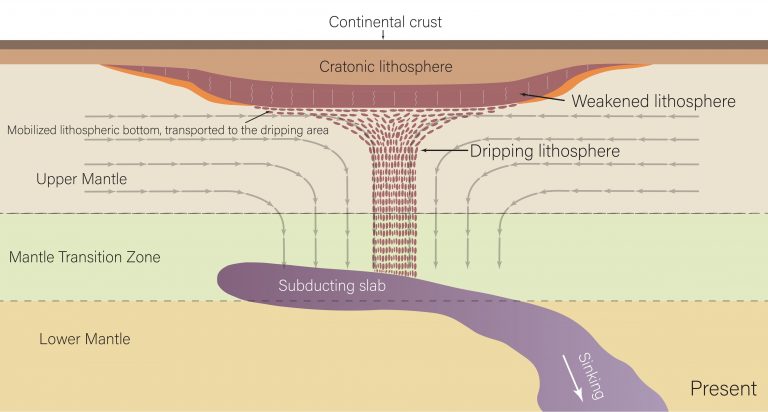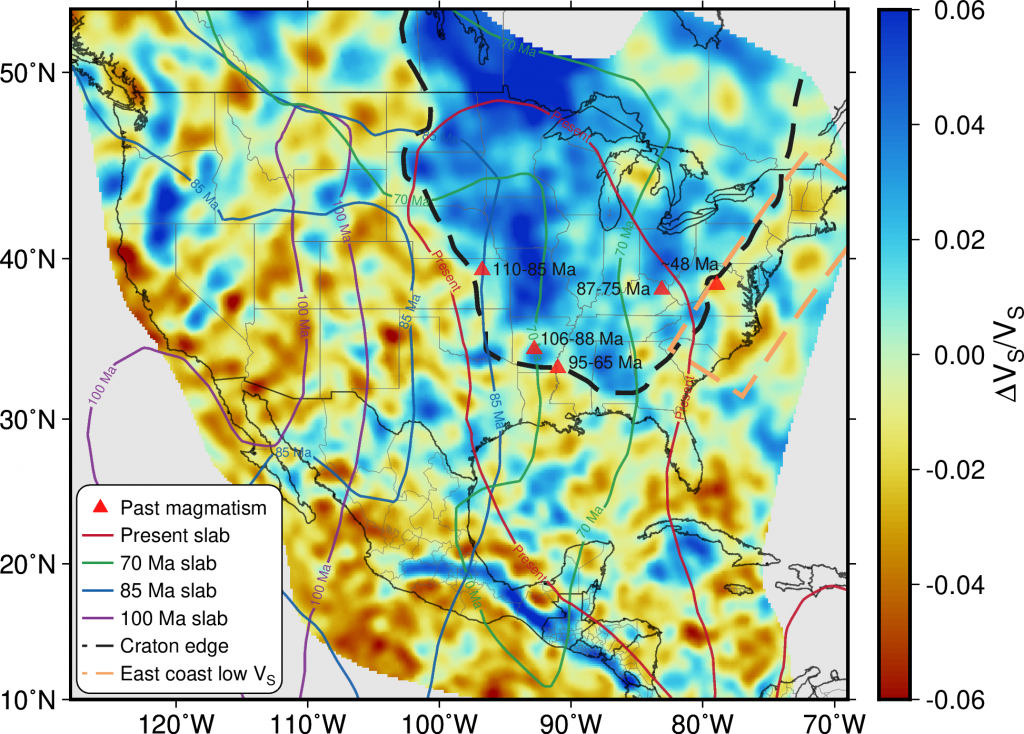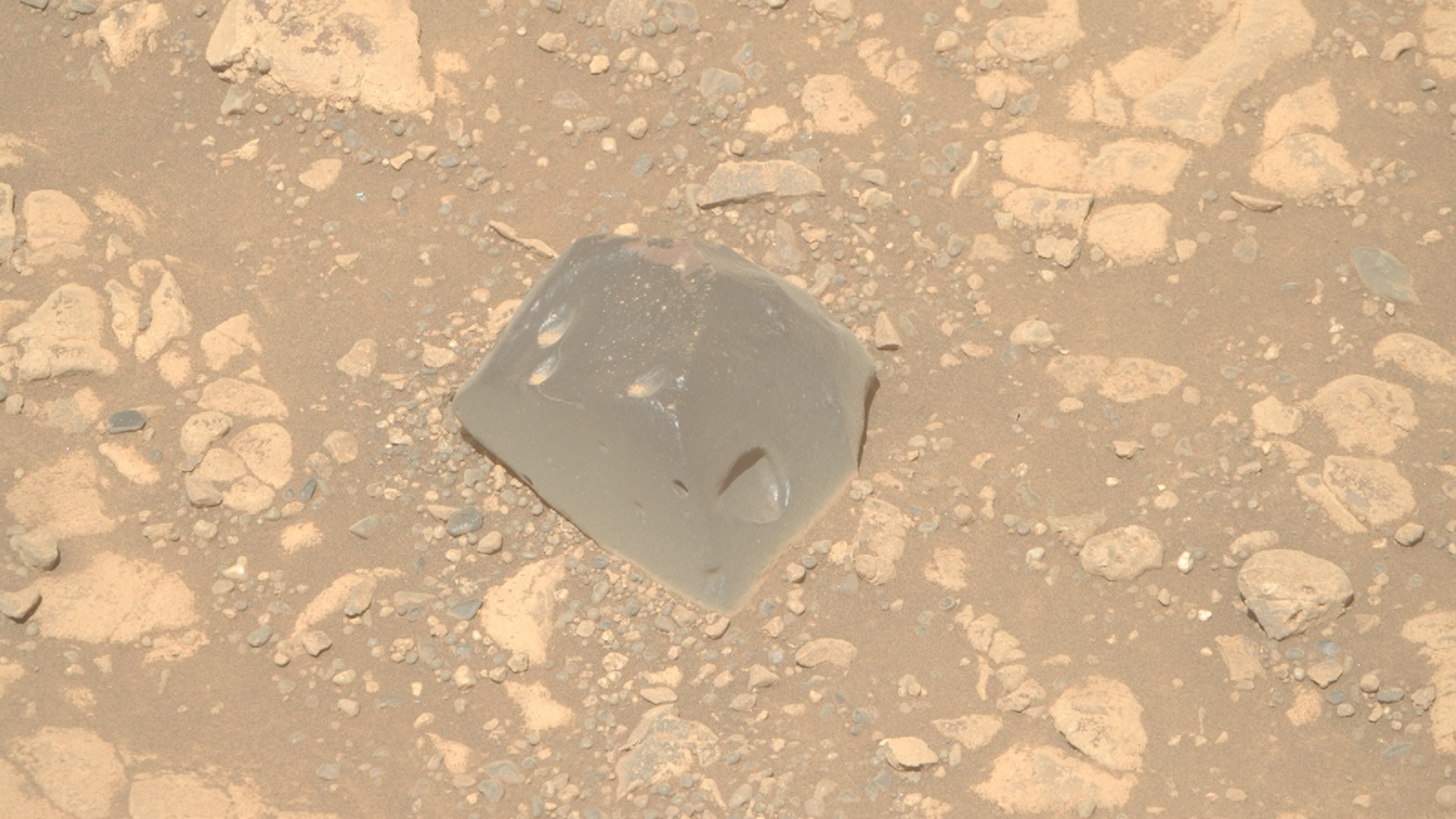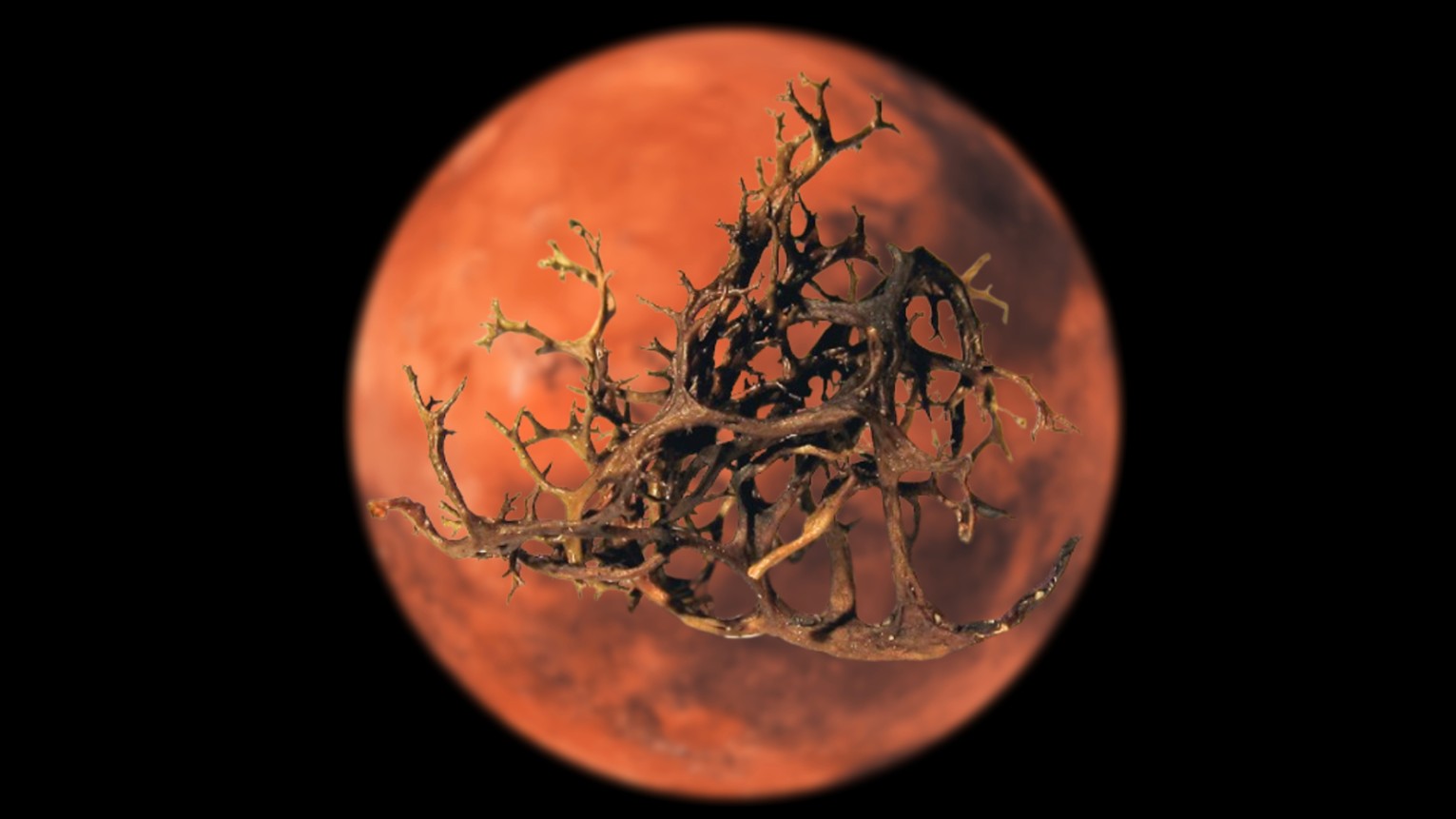North America is 'dripping' down into Earth's mantle, scientists discover
Seismic mapping of North America has revealed that an ancient slab of crust buried beneath the Midwest is causing the crust above it to "drip" and suck down rocks from across the continent.

An ancient slab of Earth's crust buried deep beneath the Midwest is sucking huge swatches of present-day's North American crust down into the mantle, researchers say.
The slab's pull has created giant "drips" that hang from the underside of the continent down to about 400 miles (640 kilometers) deep inside the mantle, according to a new study. These drips are located beneath an area spanning from Michigan to Nebraska and Alabama, but their presence appears to be impacting the entire continent.
The dripping area looks like a large funnel, with rocks from across North America being pulled toward it horizontally before getting sucked down. As a result, large parts of North America are losing material from the underside of their crust, the researchers said.
"A very broad range is experiencing some thinning," study lead author Junlin Hua, a geoscientist who conducted the research during a postdoctoral fellowship at The University of Texas (UT) at Austin, said in a statement. "Luckily, we also got the new idea about what drives this thinning," said Hua, now a professor at the University of Science and Technology of China.
Related: Earth's crust is peeling away under California
The researchers found that the drips result from the downward dragging force of a chunk of oceanic crust that broke off from an ancient tectonic plate called the Farallon plate.
The Farallon plate and the North American plate once formed a subduction zone along the continent's west coast, with the former sliding beneath the latter and recycling its material into the mantle. The Farallon plate splintered due to the advance of the Pacific plate roughly 20 million years ago, and remnant slabs subducted beneath the North American plate slowly drifted off.
Sign up for the Live Science daily newsletter now
Get the world’s most fascinating discoveries delivered straight to your inbox.
One of these slabs currently straddles the boundary between the mantle transition zone and the lower mantle roughly 410 miles (660 km) beneath the Midwest. Dubbed the "Farallon slab" and first imaged in the 1990s, this piece of oceanic crust is responsible for a process known as "cratonic thinning," according to the new study, which was published March 28 in the journal Nature Geoscience.

Cratonic thinning refers to the wearing away of cratons, which are regions of Earth's continental crust and upper mantle that have mostly remained intact for billions of years. Despite their stability, cratons can undergo changes, but this has never been observed in action due to the huge geologic time scales involved, according to the study.
Now, for the first time, researchers have documented cratonic thinning as it occurs. The discovery was possible thanks to a wider project led by Hua to map what lies beneath North America using a high-resolution seismic imaging technique called "full-waveform inversion." This technique uses different types of seismic waves to extract all the available information about physical parameters underground.

"This sort of thing is important if we want to understand how a planet has evolved over a long time," study co-author Thorsten Becker, a distinguished chair in geophysics at UT Austin, said in the statement. "Because of the use of this full-waveform method, we have a better representation of that important zone between the deep mantle and the shallower lithosphere [crust and upper mantle]."
To test their results, the researchers simulated the impact of the Farallon slab on the craton above using a computer model. A dripping area formed when the slab was present, but it disappeared when the slab was absent, confirming that — theoretically, at least — a sunken slab can drag rocks across a large area down into Earth's interior.
Dripping beneath the Midwest won't lead to changes at the surface anytime soon, the researchers said, adding that it may even stop as the Farallon slab sinks deeper into the lower mantle and its influence over the craton wanes.
The findings could help researchers piece together the enormous puzzle of how Earth came to look the way it does today. "It helps us understand how do you make continents, how do you break them, and how do you recycle them," Becker said.

Sascha is a U.K.-based staff writer at Live Science. She holds a bachelor’s degree in biology from the University of Southampton in England and a master’s degree in science communication from Imperial College London. Her work has appeared in The Guardian and the health website Zoe. Besides writing, she enjoys playing tennis, bread-making and browsing second-hand shops for hidden gems.
You must confirm your public display name before commenting
Please logout and then login again, you will then be prompted to enter your display name.









